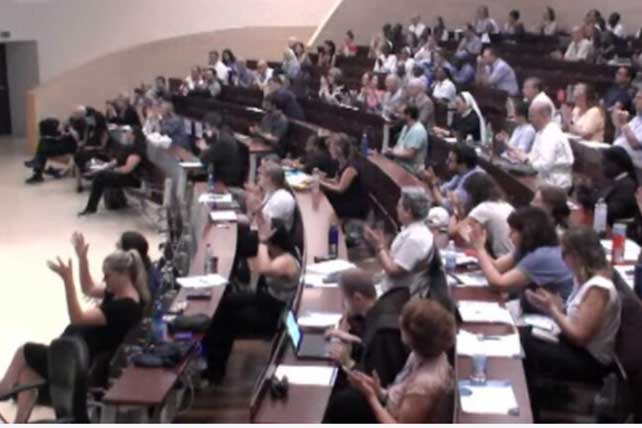Applying safeguarding measures throughout the thousands of Catholic charities, institutions, schools and organizations is a difficult task, he admitted, especially since the Catholic Church is not a monolithic structure and exists in widely different cultural, ethnic and geographic realities.
Francesco Zanardi, who leads The Abuse Network, the largest clerical abuse survivor advocacy group in Italy, said he has often encountered cases in his country where people suffering from intellectual and physical disabilities became victims of abuse.
“This is why we put an emphasis on vulnerable adults,” Zanardi told RNS on Friday. He added that cultural understandings of disability and what qualifies as abuse play a big role in how these cases are handled within the Vatican and in state courts.
The statement signed by the IADC conference participants vowed to commit to promoting an awareness and special attention to the needs of disabled people, but it also invited religious and non-religious institutions to listen to disabled people directly.
“They feel that they are invisible and overlooked,” Zollner said, adding that they should have a voice in how they can be protected and what mechanisms should be put in place that tailor to their specific needs for the prevention and reporting of abuse.
The next safeguarding conference will take place in June 2025, focusing on the theme “Women of Faith, Women of Strength,” and will address abuse within female religious institutions.
This article originally appeared here.

